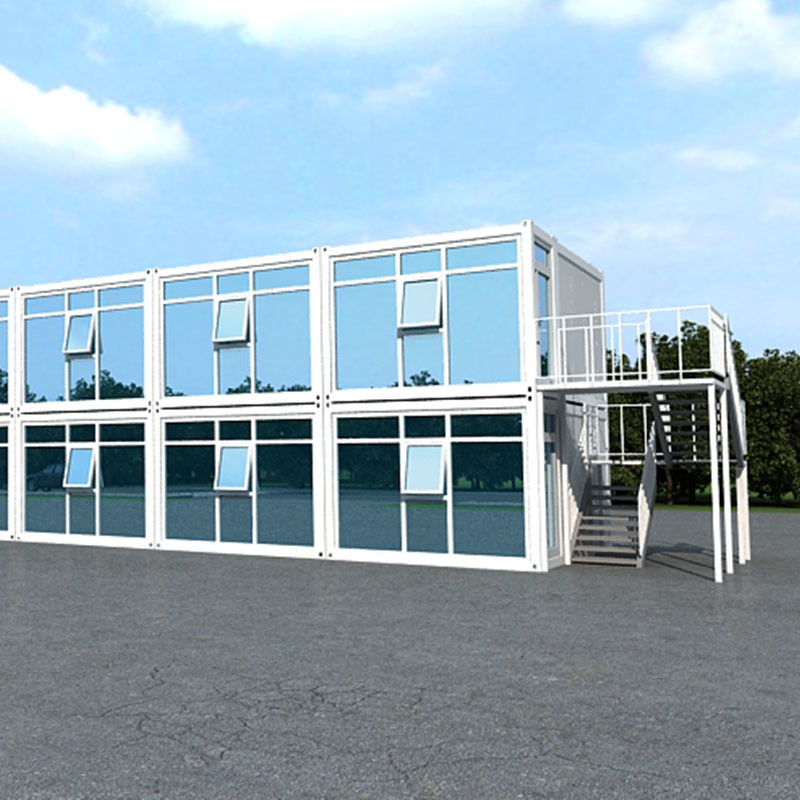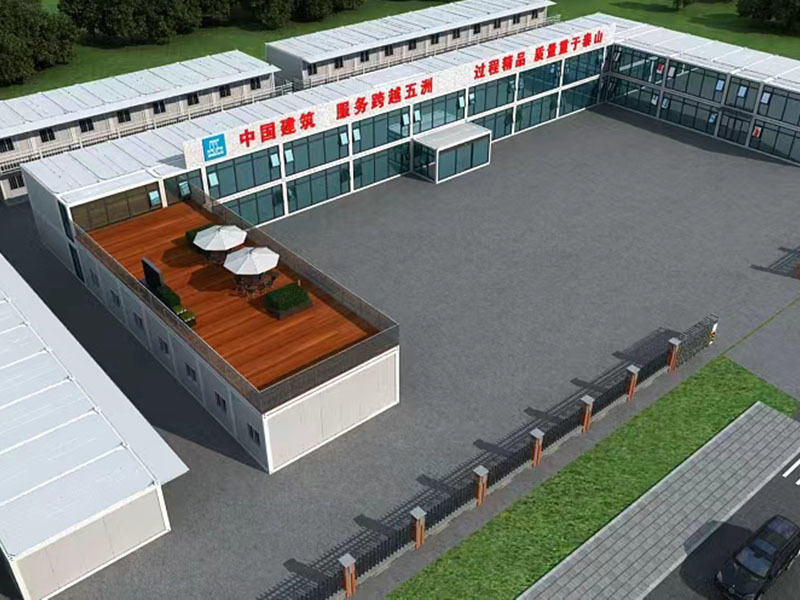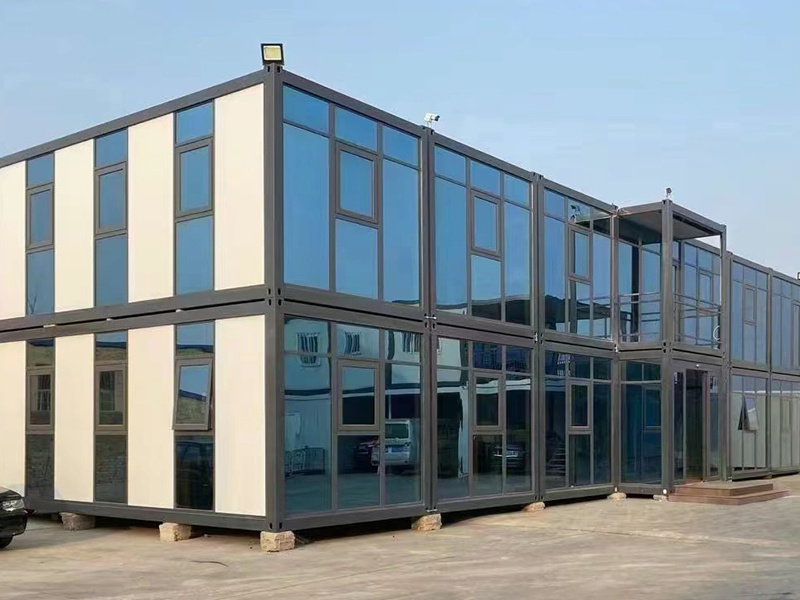Exploring the Benefits of Container Apartment Buildings: A Modern Housing Solution
Release Time:
Jul 24,2025
Exploring the Benefits of Container Apartment Buildings: A Modern Housing Solution Table of Contents Introduction to Container Apartment Buildings What Are Container Apartments? Advantages of Container Apartments Cost-Effectiveness Sustainability and Environmental Benefits Design Flexibility and Customization The Construct
Exploring the Benefits of Container Apartment Buildings: A Modern Housing Solution
Table of Contents
- Introduction to Container Apartment Buildings
- What Are Container Apartments?
- Advantages of Container Apartments
- The Construction Process of Container Buildings
- Application in Urban Development
- Addressing Challenges and Misconceptions
- The Future of Container Apartment Living
- FAQs about Container Apartment Buildings
- Conclusion
Introduction to Container Apartment Buildings
Container apartment buildings are rapidly emerging as a transformative solution in the housing sector. As urban populations continue to soar, these innovative structures offer a practical and sustainable approach to housing. By repurposing shipping containers, architects and developers are creating unique living spaces that not only address housing shortages but also promote environmentally friendly practices.
What Are Container Apartments?
Container apartments are residential units constructed using repurposed shipping containers. These sturdy, steel structures were originally designed to transport goods across oceans, but their robust nature makes them an ideal resource for creating affordable housing solutions. Container apartments can be stacked vertically or arranged horizontally, allowing for versatile architectural designs.
Advantages of Container Apartments
Container apartments come with several compelling benefits that appeal to homeowners, developers, and cities alike.
Cost-Effectiveness
One of the primary advantages of container apartment buildings is their **cost-effectiveness**. Traditional construction often incurs high expenses related to labor, materials, and time. In contrast, using shipping containers can significantly reduce both material costs and construction time, leading to lower overall project expenses. Furthermore, these units can often be sourced at a fraction of the cost of traditional building materials.
The rapid construction timeline associated with container apartments allows developers to bring projects to market more quickly, maximizing return on investment. This speed also means that housing solutions can be implemented in response to urgent needs, such as natural disasters or housing crises.
Sustainability and Environmental Benefits
Container apartments play a crucial role in promoting **sustainability**. By recycling existing shipping containers, developers reduce waste and minimize the demand for new building materials. This approach significantly lowers the carbon footprint associated with construction. Additionally, many container apartment projects incorporate eco-friendly features such as solar panels, rainwater harvesting systems, and energy-efficient appliances, further enhancing their sustainability.
Moreover, the use of container buildings can help mitigate urban sprawl by promoting higher density living within existing urban areas. This encourages the development of walkable communities, reducing reliance on vehicles and promoting a more sustainable lifestyle.
Design Flexibility and Customization
The modular nature of shipping containers provides remarkable **design flexibility**. Architects can create unique and visually appealing structures that stand out in urban environments. Containers can be combined to create multi-story buildings, and their customizable interiors allow for diverse layouts that can cater to different lifestyles.
From single-family homes to multi-unit complexes, container apartments can be tailored to meet the needs of various demographics, including singles, families, and students. This versatility is a significant advantage in accommodating the diverse population of urban areas.
The Construction Process of Container Buildings
The construction process for container apartment buildings involves several key steps that ensure the creation of safe, durable, and aesthetically pleasing housing.
1. **Planning and Design**: Before construction begins, architects and planners assess the site and develop blueprints that consider zoning regulations, building codes, and environmental impact.
2. **Container Acquisition**: Developers source shipping containers that are structurally sound. These containers are often available through shipping companies or specialized dealers.
3. **Site Preparation**: The construction site must be prepared, which often involves laying a foundation that can support the weight of the containers and ensure proper drainage.
4. **Modifications**: Containers are then modified to accommodate windows, doors, and interior spaces. This process may involve cutting and welding to create the desired layout.
5. **Assembly**: Once modifications are complete, containers are transported to the site and assembled according to the design blueprint. This phase can be completed rapidly, especially compared to traditional construction methods.
6. **Finishing Touches**: Finally, interiors are finished, adding plumbing, electrical systems, and insulation. Landscaping and outdoor spaces are also developed to enhance livability.
Application in Urban Development
Container apartment buildings are particularly well-suited for urban development, addressing critical housing shortages in metropolitan areas. Cities facing significant population growth can utilize container apartments to provide affordable housing options while minimizing their environmental impact.
These structures can be integrated into existing neighborhoods, revitalizing underutilized spaces. By converting vacant lots, abandoned buildings, or infill sites into container apartments, cities can promote economic growth, enhance community engagement, and create attractive living spaces.
Moreover, container apartments can be designed with mixed-use functionalities, incorporating commercial spaces on the ground floor, which can foster community interaction and economic opportunities.
Addressing Challenges and Misconceptions
Despite their numerous benefits, container apartments face several challenges and misconceptions. One common misconception is that these structures resemble temporary housing or are of lower quality. In reality, when designed and constructed correctly, container buildings can be just as durable and comfortable as traditional homes.
Another challenge includes zoning laws and building codes, which may not be equipped to handle the unique aspects of container construction. Developers often work closely with local government agencies to navigate these regulations and ensure compliance.
Additionally, insulation and climate control are essential considerations. Proper insulation must be installed to ensure energy efficiency and comfort for residents, as metal containers can be prone to temperature fluctuations.
The Future of Container Apartment Living
The future of container apartments looks bright as society increasingly embraces sustainable living and innovative housing solutions. As urban areas continue to evolve, container buildings may become a standard component of urban planning.
Developers are increasingly exploring advanced technologies, such as 3D printing and modular construction techniques, to enhance the design and efficiency of container apartments. This evolution may lead to even more sustainable and customized living options for future generations.
Furthermore, as public awareness of climate change and environmental sustainability grows, the demand for eco-friendly housing solutions will likely increase. Container apartments can play a pivotal role in meeting this demand, showcasing the potential for innovative design and responsible living.
FAQs about Container Apartment Buildings
1. Are container apartments safe to live in?
Yes, container apartments are safe when constructed according to building codes and regulations. They undergo rigorous assessments to ensure structural integrity and safety.
2. How long do container apartments last?
With proper maintenance, container apartments can last for several decades. The steel structure is durable and resistant to many common issues that affect traditional buildings.
3. Can container apartments be insulated?
Absolutely. Insulation is a critical component of container apartments to ensure comfort and energy efficiency. Various insulation materials can be used to optimize temperature control.
4. Are container apartments suitable for all climates?
Container apartments can be adapted for various climates through thoughtful design, insulation, and heating/cooling systems to ensure comfort in all environments.
5. What is the cost of building a container apartment?
The cost of building a container apartment varies based on location, design, and local regulations. However, they often prove to be more cost-effective than traditional construction methods.
Conclusion
Container apartment buildings represent a groundbreaking solution in the modern housing industry, merging affordability, sustainability, and design innovation. As urbanization continues to challenge traditional housing paradigms, these unique structures offer a promising alternative that meets the demands of a growing population while promoting environmentally responsible practices.
With their myriad advantages, from cost-effectiveness to design flexibility, container apartments are poised to play a significant role in shaping the future of urban living. Embracing this trend not only addresses immediate housing shortages but also fosters a more sustainable and vibrant urban landscape for generations to come.
Key words:
What Else Might You Learn?










